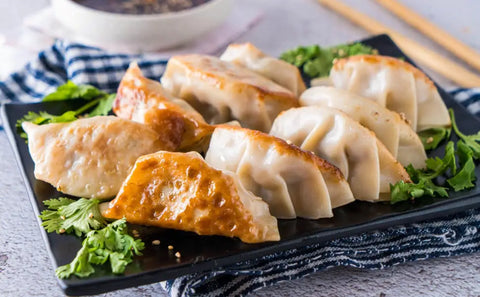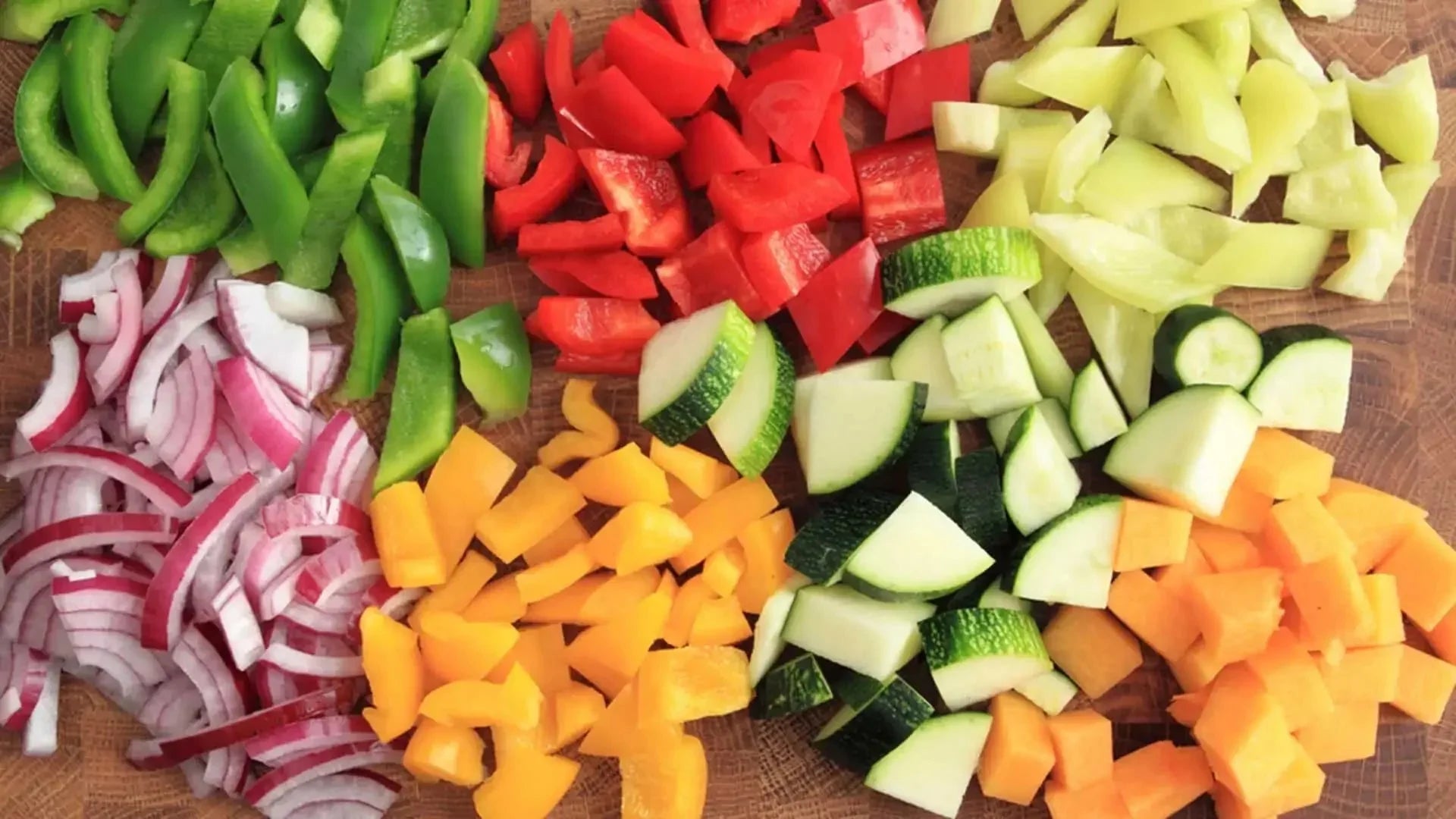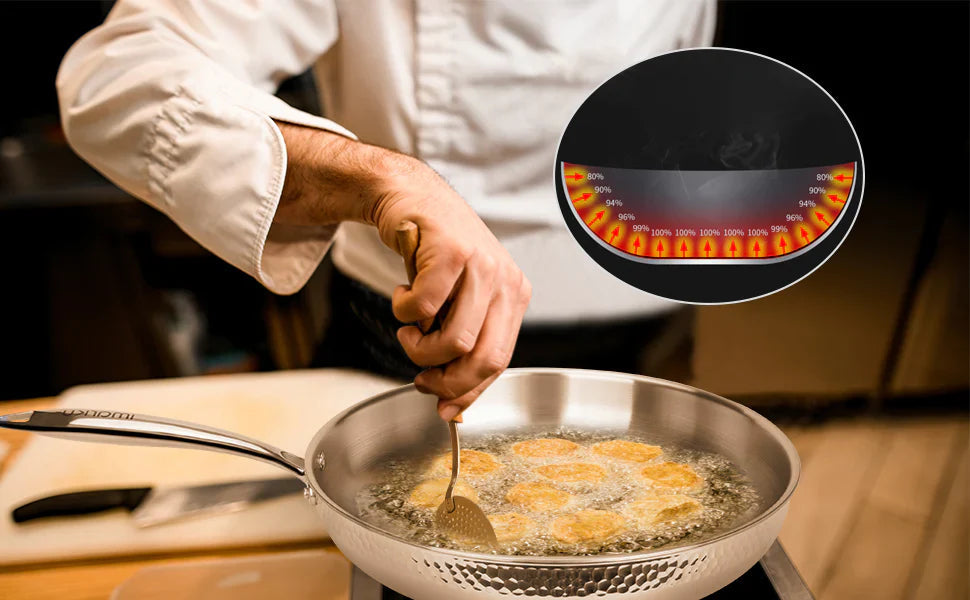TABLE OF CONTENTS
Unless you had grandparents or parents that shared their recipes for dumplings, most people might never have learned how wonderful homemade dumplings can be.
And these days, with so many people on a budget, going back to the kitchen to make home-cooked meals isn't so uncommon now. Here's how you can make easy drop dumplings for soups, stews, and more.
What are Dumplings?
Across the globe, dumplings can be found in many cultures and are made from flour, water, and salt makes dough. This dough is sometimes wrapped around little bits of meat, veggies, fish, cheese, and even sweet fillings.
Depending on what the recipe calls for, these dumplings can then be fried, baked, steamed, or boiled. More often than not, you'll likely see dumplings on the menu at Chinese take-out or in restaurants.
If you have ever heard of ravioli, tortellini empanadas, pierogi, gnocchi, or knödel, these are all variants of dumpling recipes. The dough ingredients will often vary when each country's recipe calls for different kinds of flour and starches to be used to make the dough likewise.
This is why dumplings can be so versatile for different meals, with no two countries having the same recipe.

Dumpling ingredients
The ingredients for dumplings don't change all that much from recipe to recipe, but it's important to understand that not all recipes were meant to be cooked the same way. The most common recipe for dumplings is flour, salt, and water.
It's also important to mention that some recipes include salt while others only use flour and water. This tends to change when discussing drop dumplings used for soups and stews.
These dumplings can get more complicated with ingredients, making them more stable when cooked. Soup dumplings contain flour, baking powder, sugar, salt, butter, and milk.
These combined ingredients will help a drop dumpling retain its moisture while maintaining a firm texture. These dumplings are cooked by dropping into hot soups or stews and cook instantly, so they have a biscuit-like texture.
Dumpling recipe #1 (drop dumplings)
This recipe can make about 13-14 plum-sized dumplings per fresh pot of soup or stew. You can make them smaller if you like, so there is more for the guests you serve.
2 cups all-purpose flour
4 teaspoons baking powder
1 teaspoon salt
1 cup milk
1 pot of cooking soup (for dumping)
Instructions:
1. Add your flour, salt, and baking soda into a mixing bowl and whisk it, so it's nice and fluffy.
Now add the milk and stir until you have a dough that is runny but thick enough to scoop with a spoon easily. Let this rest for 10 minutes until you add it to your soup.
2. Use a tablespoon (or teaspoon) to scoop the dumpling mixture into your hot cooking soup. Add one rounded dollop at a time until you have emptied your mixing bowl.
This method allows each dumpling to be firm enough so the last dumpling doesn't stick to the next.
3. it will take about 15 minutes for the dumpling to cook through. Cover your pot with a lid to keep in the heat. There is no need to flip the dumplings.
The heat and hot liquid will cook them through and through. When done, the soup or stew can be served.
Dumpling recipe #2 (filled dumplings)
This recipe can make 28 (one-half to three-quarter inch square) sized dough dumplings. This recipe uses all-purpose flour, which is good for various filled dumplings.
2 cups all-purpose flour
cup water (lukewarm)
teaspoon salt
Instructions:
1. Into a plastic mixing bowl, add the flour and whisk it using a fork to break up any lumps. Add your salt and mix this until it's nice and powdery. Use your finger to make a semi-circle depression in the middle of the flour.
2. Slowly pour your water into the centre of the flour. Use a spatula to mix the flour and salt mixture. It will go from a sticky mixture to a smooth paste when all the water is added. Continue to mix until it makes a soft gum-like paste.
3. Scrape this mixture onto a silicone pastry mat powdered with a bit of flour, so it doesn't stick. Your dough can be kneaded by hand until it gets firm and smooth. This can be placed back into the mixing bowl and covered with a damp cloth for 20 minutes.
4. After the dough has had time to rest for 20 minutes, it's ready to be turned into dumpling patties. Using your pastry mat, roll the dough into a long snake. You can separate this snake into two pieces that will help each measure between 14-16 inches. The dough should be - inches thick for the diameter.
5. Using a utility or paring knife, slice each section into a cube-sized piece that is the same length long as the diameter. You will have around 26-28 individual pieces to roll out.
6. Roll each piece on your pastry mat with a bit of flour to prevent sticking. Use your thumb to press a dimple in the middle. This will make it easier to flatten with a rolling pin. Then, using the rolling pin, flatten each piece of dough so it's 3-inches in diameter. Your dough is ready to fill with nearly anything you want to put inside.

What is the best way to cook dumplings?
You can select any method to cook a dumpling, but the best way to cook dumplings is according to the recipe that you're using. The reason is that some cooking methods will produce a cooked dough that will be firm, soft, or crunchy according to how it's cooked.
You wouldn't want a dough that's cooked differently than what your fillings include. You certainly want to fry or pan-fried filled dumplings if there are raw vegetables.
Steaming is often the best-preferred method as this makes the outside of your dough nice and silky with a slight amount of stretchy chew when you eat it. Boiling will make a firm dough that's more pasta-like with less chew and a dense bite.
If you choose baking, this makes a great crunch that's more like pan-fried but with less oil. Overall, the cooking method that you prefer is the attractive nature of how dumplings are prepared.
Some fillings might be precooked or partially cooked, so all that's required is to cook the dough. This can be preferred for dumplings that are cooked hot and fast.
This also happens to be the same method in that easy dump dumplings are cooked. Since this sticky dough will start to cook on the outside as soon as it touches hot soup liquids, you control how many you want to make.
Even though nothing is inserted into this type of dumpling batter, these won't interfere with the flavor of your soup or stew. As your dumpling cooks, it essentially seals itself on the outside and slowly absorbs the liquid of your soup.
For this reason, you should always make slightly more liquid, so you still have enough to serve rather than having dumplings that soaked up more liquid than you expected.
How to tell when dumplings are done?
All homemade dumplings that are added to soups and stews will need to pass the toothpick test. You should use a wooden skewer, so you don't burn yourself near the soup's surface.
After 12-15 minutes, you should be able to stick a dumpling all the way through without anything sticking. The lid must be on your soup so that heat and steam will cook your dumpling within 15 minutes. Any longer, and your dumplings start to fall apart!
This is why you need to start a timer to keep an eye on the time your dumplings cook in soups. This also requires you to time yourself so that the last stage of making your soup is when you start adding the dumpling mixture.
For any of the filled dumplings, this will also need to be timed with your meal. Filled ravioli and tortellini can be added to a soup the same way as drop dumplings.
For the other types of filled dumplings, you will see the outside is cooked after a few minutes of getting steamed, baked, fried, or pan-fried.
These thinner dumplings tend to cook much faster because the dough doesn't take more than 5 minutes to cook completely.

How to store and freeze dumplings
The dough made for drop dumplings or filled dumplings can be frozen by placing the dough into ice cube trays or anything that will create a rounded shape. Luckily, silicone freezer trays work the best.
Once the dough is frozen, you can transfer them into a Ziplock freezer bag and squeeze out the excess air. This dough will last 6-8 months or longer, depending on how much air is sucked out of your bag.
In filled dumpling dough, the process is the same. So- you place your precut pieces of dough onto a small tray and then flash freeze them. After this, the dough goes into Ziplock bags the same way as soup dumpling dough.
Once you want to use this dough for future use, let it thaw for 30-minutes before adding it to your soup or rolling it out to insert fillings.
Conclusion
These easy tips will give you plenty of food for thought, no matter what kind of homemade dumplings you want to make. As you can expect, filled dumplings or easy drop dumplings are delicious and fun to make once you learn these steps.
After this, you'll be happy to know that homemade dumplings will create new memories even if you've never enjoyed dumplings before.






















Leave a comment
All comments are moderated before being published.
This site is protected by hCaptcha and the hCaptcha Privacy Policy and Terms of Service apply.